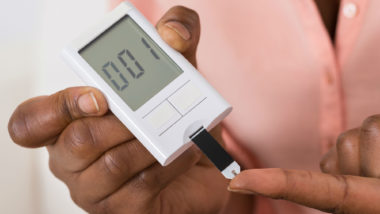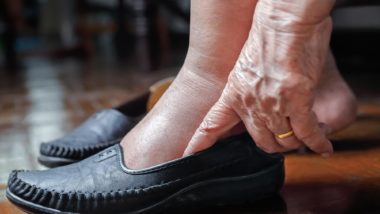Top Class Actions’s website and social media posts use affiliate links. If you make a purchase using such links, we may receive a commission, but it will not result in any additional charges to you. Please review our Affiliate Link Disclosure for more information.
If you know someone with diabetes who has had to amputate toes or another part of their foot or leg, you may wonder why the amputation became necessary. Some studies suggest that the type of medications a patient takes to control diabetes may contribute to an increased risk of amputation.
Why Are Patients with Diabetes at Risk of Amputations?
Diabetic neuropathy is a type of nerve damage that increases the risk of amputation. The National Health Institute says that nearly 86,000 lower-extremity operations are performed each year with half of those related to diabetes or diabetes-related problems.
Diabetic neuropathy affects up to 70 percent of patients with diabetes. According to Medical News Today, the condition is nerve damage caused by high blood sugar levels over time and most often affects the feet and hands. Sometimes diabetic neuropathy can cause nerve pain, often described as a burning sensation, that also may hide the existence of true foot injuries.
Older patients, those who are overweight, and those who have had diabetes for at least 25 years are more apt to incur nerve damage in their extremities.
AJMC explains that unfortunately, recent research suggests that diabetic lower-limb amputations may be on the rise. This information comes from new data presented by the American Diabetes Association’s publication, Diabetes Care.
For decades, the rates of diabetes amputation were on the decline, but now that heartening trend seems to have reversed.
The research presented in Diabetes Care was based on a study of lower limb amputation between 2000 and 2015. The amputations studied were non-traumatic, explains AJMC, and included both diabetic and non-diabetic amputations.
However, the research did more specific insight into different kinds of non-traumatic amputations, including the increased need to amputate toes, feet, and lower limbs of diabetic patients.
According to the research, rates of diabetic amputations increased by 50 percent between 2009 and 2015. The most notable increase occurred in young adults between 18 and 44 and middle-aged adults between 45 and 64 years old.
AJMC discusses a few factors that may have contributed to the rise in amputations. The publication notes that more young adults are being diagnosed with obesity and diabetes at young ages.
Additionally, insulin costs have reportedly increased drastically, which may prohibit some diabetics from accessing necessary medication to best manage their condition. Both doctors and patients have explained that patients have taken to rationing or skipping doses of insulin to contend with rising costs.
Similarly challenging is the reality that fewer young adults and middle-aged adults have health insurance than those over the age of 65. These older adults qualify for Medicare, giving them access to health insurance.
What Does Diabetic Neuropathy Have To Do With Risks of Amputation?
When patients have such nerve damage, they may not feel pain in injured or infected parts of their feet. An open sore or cut may go unrecognized until infection develops. Uncontrolled infection can become gangrenous, which means the affected tissue dies.
Sometimes even a treated infection can become gangrenous if the bacteria don’t respond to the antibiotic. People with diabetes also often suffer from poor circulation, which means less blood circulates to the extremities. When less blood is delivered to the extremities, such as an infected big toe, less medication is delivered there, too, further inhibiting the healing process.
 Which Medications May Increase the Risk of Amputation?
Which Medications May Increase the Risk of Amputation?
A 2018 study from Sweden found that patients taking SGLT2 inhibitors to control blood sugar appeared to have twice the risk of diabetic limb amputation when compared to patients who did not take the drugs.
Farxiga (dapagliflozin), Jardiance (empagliflozin), and Invokana (canagliflozin) are among the SGLT2 inhibitors studied by Dr. Peter Ueda, a researcher with the Karolinska University Hospital in Stockholm, Sweden.
The study compared patients taking SGLT2 inhibitors in pill form with patients who were taking GLP-1 receptor antagonists, which are injectable non-insulin medications also used to control blood sugar levels, according to Very Well Health.
Dr. Peter Ueda, MD, Ph.D. of the Karolinska Institute in Solna, Sweden, led the observational study. He and fellow researchers took a close look at data regarding more than 17,200 patients who were taking either an SGLT2 inhibitor or GLP-1 receptor agonist.
In the SGLT2 inhibitor group, 61 percent of patients took Farxiga, 38 percent took Jardiance and 1 percent took Invokana. According to published results, the patients taking SGLT2 inhibitors had not only twice the risk of lower-limb diabetic amputation, but also more than twice the risk for diabetic ketoacidosis.
The latter is also linked to dehydration. According to Medical News Today, the increased thirst associated with diabetes can lead to dehydration even when the patient drinks more liquids because high blood sugar levels can interfere with the body being able to properly metabolize water.
In addition, patients with diabetes excrete about one extra liter of urine each day when compared to the general population. When an SGLT2 inhibitor forces the body to get rid of excess sugar through the urine, an even greater production of urine may make the patient more susceptible to dehydration.
Diabetic ketoacidosis begins when the body is not able to use glucose for energy. As a result, the body starts to break down fat for energy, producing ketones as a byproduct. When too many ketones get into the bloodstream, the blood becomes acidic and can lead to a potentially life-threatening situation.
Dizziness, nausea, vomiting, abdominal pain, fruity-smelling breath, and confusion are all symptoms of diabetic ketoacidosis. The condition can quickly become life-threatening, leading to the loss of consciousness or a diabetic coma.
Why Would Farxiga, Jardiance or Invokana Increase Diabetic Amputation Risk?
SGLT2 inhibitors work by redirecting excess sugar from the bloodstream to the kidneys so that the extra glucose can be excreted through the urine.
The increased urination can place the patient at risk of dehydration, which in turn inhibits circulation due to less liquid being available to move the blood. The sluggish circulation may be why patients taking Invokana, Jardiance or Farxiga may face twice the risk of having to amputate toes, the middle of the foot or in rare cases, even a portion of the leg.
What If I Have Been Taking An SGLT2 Inhibitors and My Doctor Had to Amputate Toes?
If you or a loved one has undergone an amputation after taking an SGLT2 inhibitor, you may have a legal claim against the drug’s maker for allegedly failing to disclose the increased risk of diabetic amputation. Legal representation may result in compensation for actual medical expenses, pain and suffering, lost wages and other repercussions.
If you or a loved one experienced diabetes amputation after taking Jardiance or Farxiga, you may have a legal claim and may be eligible to seek compensation from the drug maker for your medical and other expenses. Fill out the form on this page now to see if you qualify!
ATTORNEY ADVERTISING
Top Class Actions is a Proud Member of the American Bar Association
LEGAL INFORMATION IS NOT LEGAL ADVICE
Top Class Actions Legal Statement
©2008 – 2024 Top Class Actions® LLC
Various Trademarks held by their respective owners
This website is not intended for viewing or usage by European Union citizens.
Get Help – It’s Free
Join a Free Jardiance, Farxiga Diabetes Amputation Class Action Lawsuit Investigation
If you qualify, an attorney will contact you to discuss the details of your potential case at no charge to you.
If you took Invokana or Invokamet, you do not qualify for this investigation. Click here to join a separate class action lawsuit investigation.
PLEASE NOTE: If you want to participate in this investigation, it is imperative that you reply to the law firm if they call or email you. Failing to do so may result in you not getting signed up as a client or getting you dropped as a client.
E-mail any problems with this form to:
Questions@TopClassActions.com.
Oops! We could not locate your form.


 Which Medications May Increase the Risk of Amputation?
Which Medications May Increase the Risk of Amputation?










